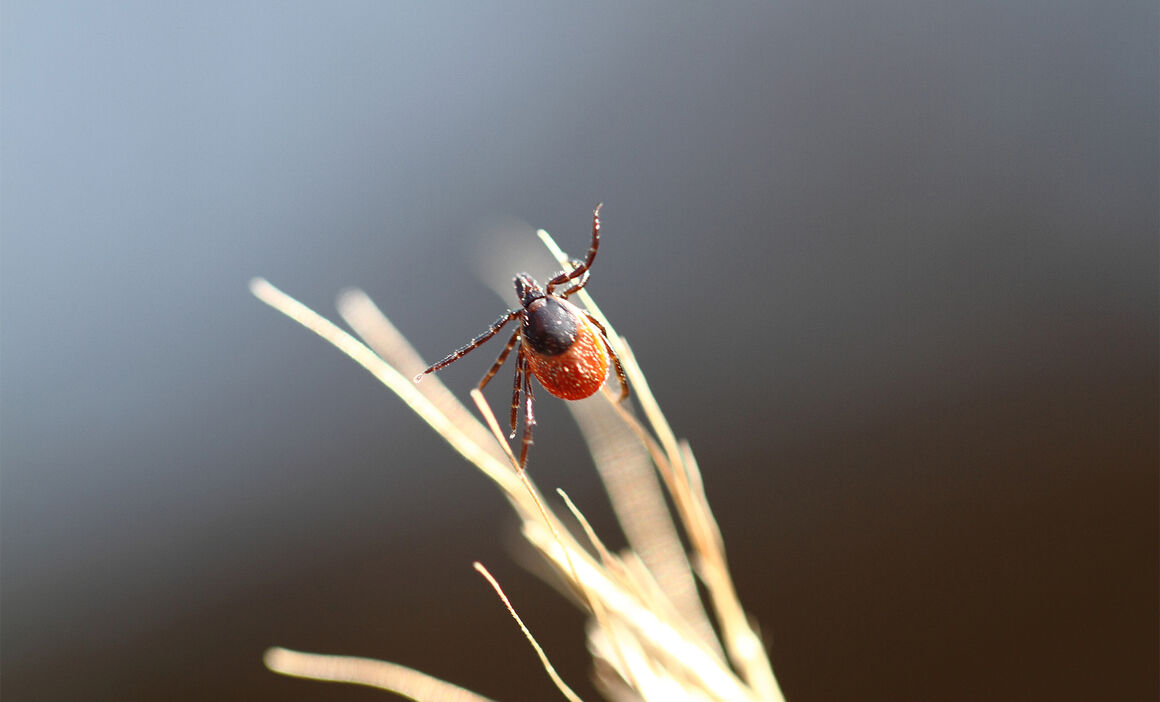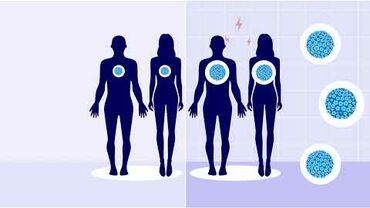Ixodes ricinus - Factsheet for experts

SCIENTIFIC SPECIES NAME: Ixodes ricinus (hard tick family – Ixodidae)
COMMON NAMES: Castor bean tick, Sheep tick, Deer tick
Basic facts
- Ixodes ricinus is an indigenous hard tick species having a wide geographical distribution.
- Ixodes ricinus ticks cover a wide geographic region in the EU from Portugal to Russia and from North Africa to Scandinavia.This wide geographical distribution entails that this tick species can survive under various environmental conditions.
- Ixodes ricinus are sensitive to climatic conditions, requiring a relative humidity of at least 80% and are restricted to areas of moderate to high rainfall with good vegetation.
- Ixodes ricinus is therefore primarily observed across Europe in deciduous woodland and mixed forest, but can be found in a range of habitats that support its blood hosts and a moist microclimate.
- The geographical distribution has changed in a number of countries in recent years, with Ixodes ricinus being found at higher altitude and latitudes.
- Ixodes ricinus is a three-host tick: larvae, nymphs and adults feed on different hosts where larvae and nymphs prefers small to medium-sized animals and adults tend to feed on large-sized animals. This tick species feeds on a broad range of mammals, birds and reptiles and frequently bites humans.
- Ixodes ricinus is involved in the transmission of a large variety of pathogens of medical and veterinary importance including e.g. tick-borne encephalitis virus and Borrelia burgdorferi s.l. causing Lyme borreliosis.
Species’ name and morphology
SCIENTIFIC SPECIES NAME: Ixodes ricinus (hard tick family – Ixodidae)
COMMON NAMES: Castor bean tick, Sheep tick, Deer tick
Morphological characters and similar species
Ixodes ricinus are relatively small ticks, females being slightly larger than males. Larvae have three pairs of legs whereas nymphs and adults have four pairs. As members of the Ixodidae family, they have a sclerotised dorsal plate called a scutum which protects them from desiccation or damage. In males it covers the whole body, but in females, only partially covers the body. Ixodes ricinus can be mistaken for other tick species such as Ixodes hexagonus and Ixodes persulcatus.
Biology
Development and life cycle
Ixodes ricinus have four life stages: egg, larva, nymph and adult and a three host life cycle. Ticks must take a blood meal in order to moult to the next life stage and produce eggs. The lifecycle is typically completed within three years, but can be shorter if climatic conditions are optimal and suitable hosts are abundant.
Mating usually occurs on the host and pheromones play an important role in finding a mate. Mating can last up to one week and once mated and fully engorged, an adult female will drop off a host onto the ground where she will seek conditions favourable for egg production. An engorged female will remain in this environment for 4-8 weeks before eggs are produced. Up to 2000 eggs can be produced, after which the female dies and larvae hatch around eight weeks later.
Tick phenology varies throughout its distribution and can show a unimodal or bimodal pattern, reaching its maximum density in spring or autumn. Generally, Ixodes ricinus display a bimodal pattern of activity but this can vary from year to year at any given site. Local abundance depends on a variety of factors including habitat or host availability and varies between different countries.
Feeding process and host preferences
Ixodes ricinus quest for hosts using an ‘ambush’ technique whereby they climb to the tips of vegetation and wait for a host to brush pass. During questing, the tick loses moisture so has to climb back down the vegetation into the mat layer to rehydrate therefore the questing period is directly affected by temperature and humidity. Moving back into the mat layer reduces the probability of coming into contact with a host and uses up energy stores so is detrimental to tick survival.
Ixodes ricinus lack eyes but possess a sensory organ called the Hallers organ which is used to detect changes within the environment such as temperature, carbon dioxide, humidity and vibrations, which can indicate the best times to quest and the presence of a host.
Each stage attaches to a single host and feeds on blood for a period of days before detaching and then moulting (larva/nymphs) or producing eggs.
Larvae do not move horizontally over a large distance so often remain aggregated within their environment whilst waiting for a host. Once a host is found, they can feed and moult to the nymphal stage and become dispersed within the environment.
During the feeding process, saliva is produced which contains anti-coagulants, anti-inflammatories, and anti-haemostatins which aid the process.
Ixodes ricinus feed on a wide range of hosts including small rodents, passerines, larger mammals like hedgehogs, hares, squirrels, wild boar and roe deer with the juvenile stages feeding on smaller hosts such as wood mice, and adult stages feeding on larger hosts like cattle and deer. Larger hosts are important in maintaining tick populations, with populations tending to be lower in the absence of larger hosts. Movement of hosts can also affect population numbers or result in the establishment of foci in new areas. Ixodes ricinus also have a high affinity for humans.
Habitat
Ixodes ricinus prefer habitats with vegetation that maintain high humidity e.g. deciduous woodland and where microclimate and host composition are suitable for the development of all four life-stages. A favourable microclimate can result in the proliferation of I. ricinus in a number of habitats provided suitable host species are also present. These include grassland, heathland, rough pasture, urban parks, as well as deciduous and coniferous woodland.
Environmental criteria
Ixodes ricinus are sensitive to climatic conditions, requiring a relative humidity of at least 80% and are restricted to areas of moderate to high rainfall with good vegetation (i.e. litter layer and soil remain humid during the day).
Milder winters/warm springs will result in early questing ticks. Hot summers can result in increased development from one life stage to the next. Also, a longer vegetation period can benefit tick populations.
Ticks overwinter on the ground and survival can be enhanced by snow cover which prevents the ground temperature going below zero. Cold winters could affect survival of small mammal hosts the following year which could mean fewer blood hosts for ticks. However, snow cover can also help hibernating small mammals but may not be so good for larger animals like deer that feed on sprigs.
Geographical distribution
Ixodes ricinus cover a wide geographic region including; Scandinavia, British Isles, central Europe, France, Spain, Italy, the Balkans, east Europe and North Africa.
Distribution has changed in a number of countries in recent years, with Ixodes ricinus being found at higher altitude in Bosnia & Herzegovina and Czech Republic. These changes in distribution have been suggested to be a result of a combination of factors including climate change, changes in land use, changes in deer populations and changes in wild boar populations.
Modelling of data suggests that Ixodes ricinus will become distributed throughout Norway, Finland and Sweden by 2071-2100 and also that deciduous woodland may extend northward in Finland and Norway which will assist in the further spread of Ixodes ricinus.
Public health importance
Vector status
Ixodes ricinus is involved in the transmission of a large variety of pathogens of medical and veterinary importance including Borrelia burgdorferi s.l. causing Lyme borreliosis, tick-borne encephalitis virus, Anaplasma phagocytophilum causing human granulocytic ehrlichiosis, Francisella tularensis causing Tularaemia, Rickettsia helvetica and Rickettsia monacensis, Babesia divergens and Babesia microti responsible for Babesiosis, Louping ill virus and Tribec virus.
Surveillance
Surveillance of ticks, particularly those capable of transmitting disease, is important.
Flagging or dragging cloth across vegetation is a common method used to sample areas for ticks. Questing tick density can be evaluated this way and this method is best suited for low vegetation. This method becomes less efficient when used on tall vegetation as many ticks questing in shorter vegetation will not be collected. Alternative methods include CO2 traps using dry-ice, collection of ticks directly from the host using tweezers or simply observation of ticks on vegetation.
Sampling strategy will change depending on the life stage/type of vegetation/host being targeted, and a combination of sampling strategies may be necessary.
Control methods
Control of established tick populations can be difficult and like many disease vectors, requires an integrated pest management approach that utilises a number of different methods. Different methods may be used for different tick species depending on habitat/host preferences.
The best ways to avoid tick bites are to: use insect repellent on exposed skin; wear protective clothing with long sleeves and long trousers tucked into socks or boots; and treat socks and trouser legs with permethrin-containing insecticide.
Remove ticks from your skin immediately. Ticks prefer soft skin and hairy areas. Always inspect the entire body for ticks after outdoor activities and remove ticks by pulling them straight out with tweezers or a specially designed tick removal tool, or use your fingers if you do not have the appropriate tools at hand.



